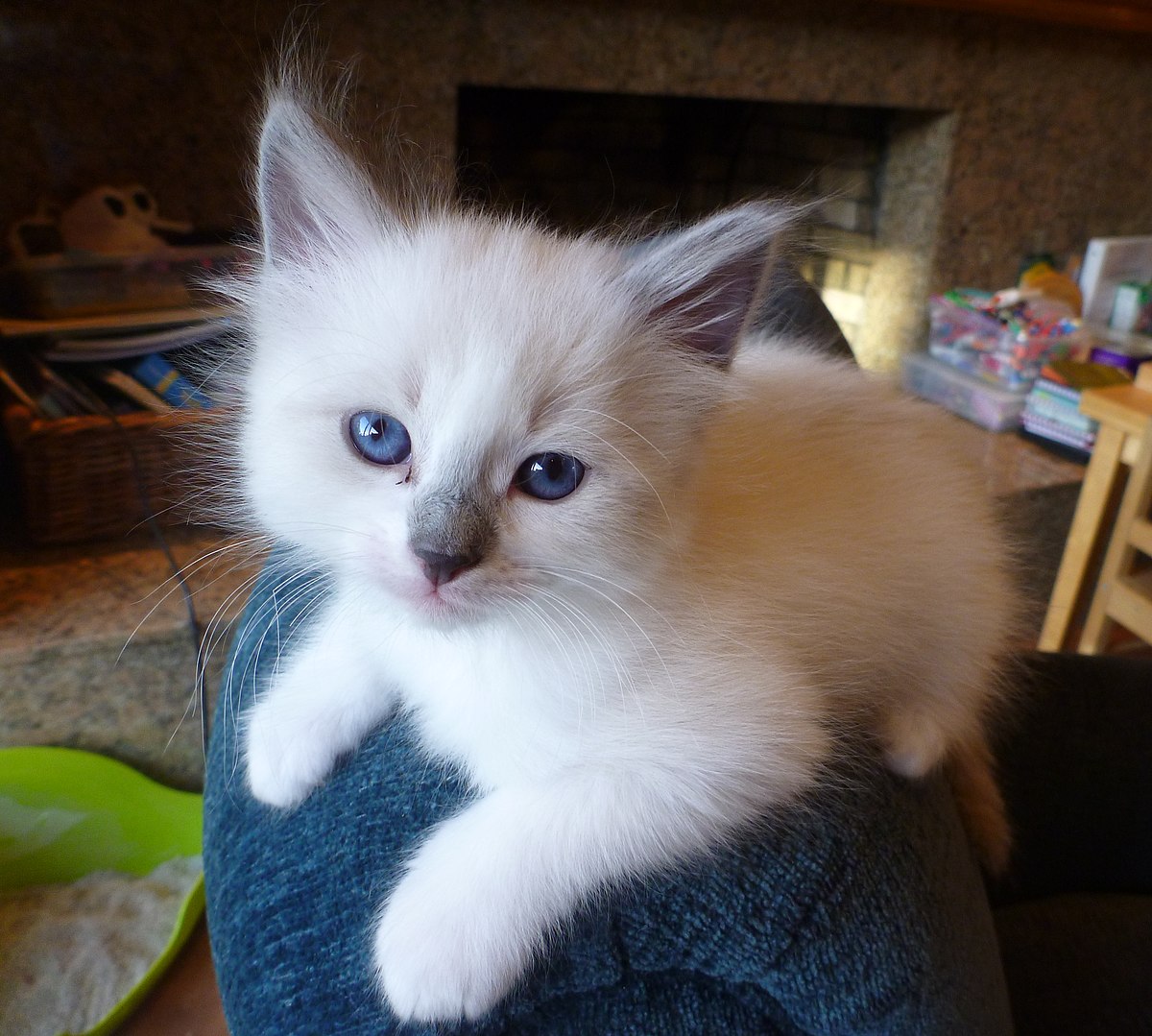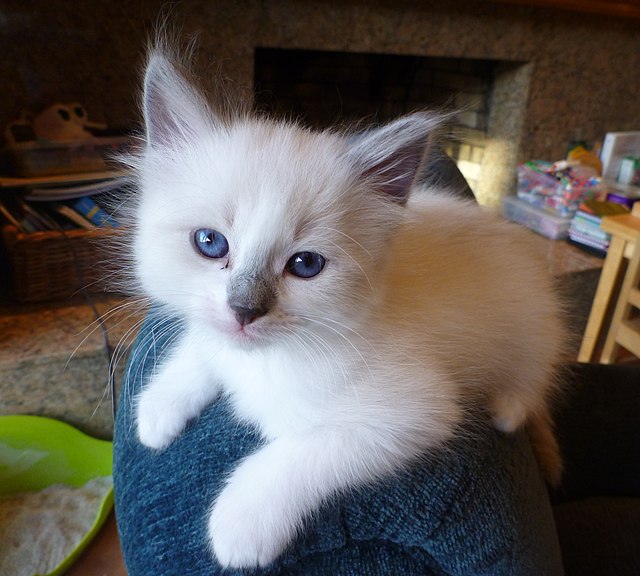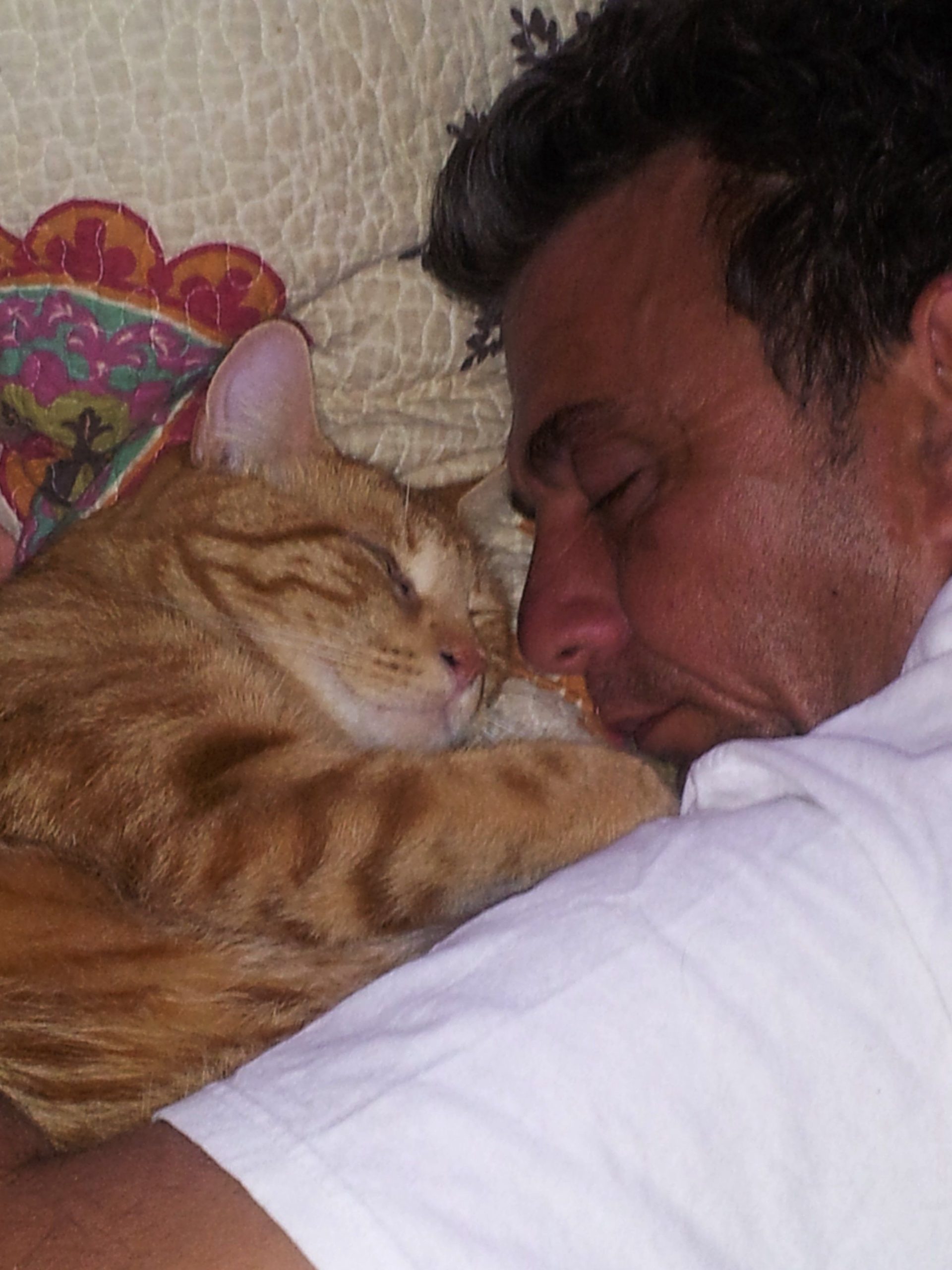Contents
- I. Introduction to Ragdoll Cats and Their Dietary Needs
- II. Understanding Lactose Intolerance in Cats
- III. Can Ragdoll Cats Safely Consume Milk?
- IV. The Potential Risks of Feeding Milk to Ragdoll Cats
- V. Alternatives to Milk for Hydrating Ragdoll Cats
- VI. Frequently Asked Questions about Ragdoll Cats and Milk
- 1. Can Ragdoll cats drink regular cow’s milk?
- 2. Is it safe to give my Ragdoll kitten milk?
- 3. What about lactose-free milk?
- 4. Can Ragdoll cats drink other types of milk?
- 5. What are the potential risks of giving milk to Ragdoll cats?
- 6. How can I provide my Ragdoll cat with additional hydration?
- 7. Are there any milk alternatives specifically made for cats?
- 8. Can Ragdoll cats develop allergies to milk?
I. Introduction to Ragdoll Cats and Their Dietary Needs

Ragdoll cats are a popular breed known for their docile temperament and striking blue eyes. These cats are large, muscular, and have semi-long hair that requires regular grooming. If you are a proud owner of a Ragdoll cat, it is essential to understand their dietary needs to ensure their overall health and well-being.
Ragdoll Cats: An Overview
Ragdoll cats were first developed in the 1960s by a breeder named Ann Baker in California, United States. They are known for their placid nature, often going limp when picked up, hence their name “Ragdoll.” These felines are social creatures and enjoy the company of their human companions.
The Importance of a Balanced Diet
A well-balanced diet plays a crucial role in maintaining the health of your Ragdoll cat. Their diet should consist of high-quality protein, essential fatty acids, vitamins, and minerals. Protein is especially important for their muscular development and overall growth.
It is recommended to feed your Ragdoll cat a combination of wet and dry cat food. Wet food provides hydration and helps prevent urinary tract issues, while dry food helps maintain dental health. Consult with your veterinarian to determine the specific nutritional requirements of your cat.
Common Dietary Restrictions
Ragdoll cats, like many other feline breeds, may have dietary restrictions or sensitivities. Some cats may be allergic to certain ingredients, such as grains or specific proteins. It is important to monitor your cat’s reaction to different foods and consult with your veterinarian if any allergies or sensitivities are suspected.
Feeding Schedule and Portion Control
Establishing a feeding schedule and controlling portion sizes is crucial to prevent obesity in Ragdoll cats. These cats have a tendency to overeat, which can lead to weight gain and related health issues. Divide their daily food intake into smaller, regular meals throughout the day to keep their metabolism active.
Remember to provide fresh water at all times to keep your Ragdoll cat hydrated. Cats generally have a low thirst drive, so it is essential to encourage them to drink by placing multiple water bowls around the house.
Conclusion
Understanding the dietary needs of your Ragdoll cat is vital for their overall health and happiness. A balanced diet, proper portion control, and regular veterinary check-ups are key to ensuring a long and fulfilling life for your beloved feline companion.
II. Understanding Lactose Intolerance in Cats

Lactose intolerance is a common condition in cats that affects their ability to digest lactose, a sugar found in milk and dairy products. Unlike humans, who produce the enzyme lactase to break down lactose, cats lack sufficient amounts of this enzyme, leading to lactose intolerance.
The Symptoms of Lactose Intolerance in Cats
Cats with lactose intolerance may display several symptoms after consuming milk or dairy products. These symptoms include:
1. Diarrhea: Digestive upset is a common sign of lactose intolerance in cats. Diarrhea may be watery or loose and can occur shortly after the consumption of lactose-containing products.
2. Vomiting: Cats may experience bouts of vomiting after ingesting milk or dairy products. This is the body’s way of getting rid of the lactose it cannot digest.
3. Abdominal discomfort: Cats with lactose intolerance may show signs of abdominal pain or discomfort, such as restlessness, bloating, or excessive gas.
Managing Lactose Intolerance in Cats
If you suspect that your cat may be lactose intolerant, it is important to avoid feeding them milk or other dairy products. Instead, opt for lactose-free alternatives or specially formulated cat milk available in pet stores.
Additionally, it is crucial to provide your cat with a well-balanced diet that meets their nutritional needs. Consult with your veterinarian to ensure that your cat’s diet is suitable for their specific requirements.
Other Considerations
While lactose intolerance is common in cats, it is essential to differentiate it from an allergy to milk proteins. Milk allergies involve an immune response to the proteins in milk, not just the lactose. If your cat shows signs of an allergic reaction, such as itching, skin rashes, or respiratory issues, consult with a veterinarian for further evaluation and guidance.
Remember, when it comes to feeding your cat, it is crucial to understand their specific dietary needs and provide them with appropriate food choices to ensure their overall well-being.
III. Can Ragdoll Cats Safely Consume Milk?

Ragdoll cats are known for their calm and gentle nature, making them beloved pets for many households. However, when it comes to their diet, it’s important to be mindful of what they consume. One common question that arises is whether it is safe for Ragdoll cats to drink milk.
Milk and Lactose Intolerance in Cats
Contrary to popular belief, most adult cats, including Ragdolls, are lactose intolerant. This means that they lack the necessary enzymes to break down lactose, the sugar found in milk. When a cat consumes milk, it can lead to gastrointestinal issues such as diarrhea, vomiting, and stomach discomfort.
Alternatives to Milk
While milk may not be suitable for Ragdoll cats, there are several alternatives that can provide them with the hydration and nutrients they need. The most important thing is to ensure that your cat always has access to fresh water. Additionally, you can consider providing them with specially formulated cat milk, which is lactose-free and designed to meet their nutritional requirements.
Understanding a Balanced Diet for Ragdoll Cats
When considering your Ragdoll cat’s diet, it is crucial to provide them with a well-balanced and nutritionally complete meal. This includes high-quality cat food that is specifically formulated for their age, size, and dietary needs. Consult with your veterinarian to determine the best diet plan for your Ragdoll cat, taking into account any specific health concerns they may have.
The Importance of Consulting a Veterinarian
Every cat is unique, and their dietary needs may vary. It is always recommended to consult with a veterinarian before making any significant changes to your Ragdoll cat’s diet. A veterinarian can provide personalized advice based on your cat’s specific requirements and help you make informed decisions regarding their nutrition.
IV. The Potential Risks of Feeding Milk to Ragdoll Cats

While it may seem like a natural choice to give milk to your Ragdoll cat, it’s important to understand the potential risks involved. Contrary to popular belief, milk is not a suitable or necessary part of a cat’s diet. In fact, feeding milk to Ragdoll cats can lead to various health issues that can be harmful to their well-being.
1. Lactose Intolerance
Like many adult cats, Ragdolls are lactose intolerant. They lack the enzyme lactase, which is necessary to digest lactose, the sugar found in milk. When cats consume milk, it can lead to gastrointestinal distress, including diarrhea, vomiting, and stomach discomfort. It’s best to avoid giving milk to Ragdoll cats to prevent these unpleasant symptoms.
2. Nutritional Imbalance
Milk does not provide the necessary nutrients that Ragdoll cats need to thrive. It lacks essential nutrients like taurine, which is vital for a cat’s heart health and vision. Feeding milk as a regular part of their diet can lead to nutritional imbalances and deficiencies, potentially causing long-term health problems. To ensure optimal health, it’s crucial to provide a well-balanced, species-appropriate diet tailored to your Ragdoll cat’s specific nutritional needs.
3. Weight Gain and Obesity
Milk is high in calories and fat, which can contribute to weight gain and obesity in cats. Ragdoll cats are already prone to obesity due to their genetic predisposition and sedentary nature. Adding milk to their diet can further increase their caloric intake and put them at risk of developing obesity-related health issues such as diabetes, joint problems, and cardiovascular diseases. It’s essential to monitor your Ragdoll cat’s weight and provide a diet that promotes a healthy body condition.
4. Dental Problems
The lactose and sugars present in milk can also have negative effects on a Ragdoll cat’s dental health. When cats consume milk, the sugars can stick to their teeth, promoting the growth of harmful bacteria and leading to dental issues such as cavities and gum disease. Regular dental care, including brushing your cat’s teeth and providing appropriate dental treats, is crucial to maintain their oral hygiene.
V. Alternatives to Milk for Hydrating Ragdoll Cats

Ragdoll cats are known for their beautiful, long coats and gentle nature. However, these cats can be prone to certain health issues, including lactose intolerance. While many people believe that cats can drink milk, the reality is that most adult cats are lactose intolerant and cannot properly digest milk.
If you’re looking for alternative ways to hydrate your Ragdoll cat, there are several options to consider:
1. Fresh Water
The simplest and most important alternative to milk for hydrating your Ragdoll cat is fresh water. Make sure to provide clean, filtered water at all times and encourage your cat to drink regularly. Some cats prefer running water, so you may consider investing in a cat water fountain to entice them to drink more.
2. Wet Cat Food
Wet cat food is another excellent option for keeping your Ragdoll cat hydrated. These foods have a higher moisture content compared to dry kibble, which can help prevent dehydration. Look for high-quality wet cat food that is specifically formulated for adult cats and meets their nutritional needs.
3. Bone Broth
Bone broth is a nutritious and hydrating alternative that many cats enjoy. It’s rich in minerals and collagen, which can be beneficial for your cat’s joint health and overall well-being. Make sure to use bone broth made from animal bones and avoid any seasonings or additives that may be harmful to cats.
4. Cat-Specific Hydration Products
There are various cat-specific hydration products available on the market that can be used as alternatives to milk. These products are specially formulated to provide hydration and may contain added vitamins and minerals. Consult with your veterinarian for recommendations on the best products for your Ragdoll cat.
5. Ice Cubes and Watered-Down Broth
If your cat enjoys playing with ice cubes, you can add some to their water bowl to make it more enticing. Additionally, you can try diluting low-sodium chicken or beef broth with water to create a flavorful and hydrating treat for your Ragdoll cat.
Remember to always consult with your veterinarian before making any significant changes to your cat’s diet or introducing new foods. Every cat is unique, and their dietary needs may vary.
By providing alternative hydration sources and ensuring your Ragdoll cat has access to fresh water, you can help keep them healthy and hydrated without relying on milk.
VI. Frequently Asked Questions about Ragdoll Cats and Milk
Here are some common questions that cat owners often have regarding the topic of Ragdoll cats and milk:
1. Can Ragdoll cats drink regular cow’s milk?
No, it is not recommended to give cow’s milk to your Ragdoll cat. Most adult cats are lactose intolerant, meaning they lack the necessary enzymes to break down lactose, the sugar found in milk. This can lead to digestive issues like diarrhea and upset stomach.
2. Is it safe to give my Ragdoll kitten milk?
While Ragdoll kittens might be able to tolerate small amounts of milk due to their young age, it is still not advisable to give them cow’s milk. Kittens have a higher lactase level than adult cats, but it gradually decreases as they grow older. It’s best to provide them with a specially formulated kitten milk replacement if necessary.
3. What about lactose-free milk?
Lactose-free milk is a better alternative if you want to offer your Ragdoll cat a milk-like treat. However, it should still be given sparingly as an occasional treat rather than a regular part of their diet. Always check with your veterinarian before introducing any new food or drink into your cat’s routine.
4. Can Ragdoll cats drink other types of milk?
In general, it is best to avoid feeding your Ragdoll cat any type of milk, including almond milk, soy milk, or goat’s milk. While these alternatives might be lactose-free, they can still cause digestive upset or allergies in cats. Stick to providing fresh water and a balanced cat food diet to meet their nutritional needs.
5. What are the potential risks of giving milk to Ragdoll cats?
Feeding milk to Ragdoll cats can lead to digestive issues like diarrhea, vomiting, and abdominal discomfort. It can also contribute to weight gain and obesity, as milk is high in calories. Additionally, certain cats may develop allergies to milk proteins, leading to skin reactions or respiratory problems.
6. How can I provide my Ragdoll cat with additional hydration?
If you want to increase your cat’s water intake, you can try providing them with a cat water fountain or adding wet food to their diet. Wet food contains higher moisture content, helping to keep your Ragdoll cat hydrated. Regularly refreshing their water bowl and ensuring they have access to clean, fresh water is also essential.
7. Are there any milk alternatives specifically made for cats?
Yes, there are milk alternatives formulated specifically for cats, such as cat milk replacers or cat milk treats. These products are designed to be easily digestible and serve as a nutritional supplement rather than a regular beverage. Always consult with your veterinarian before introducing any new products to your cat’s diet.
8. Can Ragdoll cats develop allergies to milk?
Yes, like any other food, some Ragdoll cats may develop allergies or intolerances to milk. If you notice any symptoms such as skin rashes, itching, swelling, or respiratory distress after giving your cat milk, it’s best to consult with your veterinarian to determine the cause and find suitable alternatives.

Jackson is an accomplished content writer with a flair for captivating storytelling. With a Bachelor’s degree in English Literature from the prestigious University of California, Berkeley, Hunter’s educational background has honed his writing skills to perfection. His love for felines is evident in his extensive knowledge of cat behavior and care, making him an expert in the field. Hunter’s passion for cats has led him to contribute insightful articles to various online platforms, providing valuable information and tips to cat owners worldwide. With his exceptional writing abilities and deep understanding of cats, Hunter continues to create engaging content that resonates with readers and leaves a lasting impact.
